As your furry friend ages, it becomes increasingly important to provide them with the care and attention they need to stay healthy and comfortable. Older dogs have unique needs that require special consideration and understanding. From addressing their physical health to ensuring their mental well-being, there are several key factors to consider when caring for your senior pet.
Key Takeaways:
- Implementing specific care measures can greatly improve the quality of life for your senior dog.
- Regular exercise, appropriate diet, and mental stimulation are crucial for keeping your aging pet happy and healthy.
- End-of-life care decisions require careful thought and assessment of your dog’s overall well-being.
- Creating a comfortable and accessible environment at home is essential for senior dogs with mobility issues.
- Seeking guidance from a veterinarian regarding nutrition and grooming needs can help ensure your senior dog’s health and well-being.
Basic Needs of Older Dogs
As dogs age, their basic needs change, and it’s important to pay attention to their specific requirements to ensure their well-being and comfort. In this section, we will explore the basic needs of older dogs, including their temperature regulation, exercise routines, and dietary considerations.
Temperature Regulation
Older dogs are more sensitive to temperature changes due to changes in their metabolism. They may struggle with thermoregulation and may feel colder in winter or more prone to dehydration in extreme heat. To help your senior dog maintain a comfortable temperature:
- Provide a senior dog blanket or coat: In cold weather, consider providing your dog with a warm and cozy blanket or coat to keep them comfortable and protected from the cold. This can be especially beneficial for dogs with thin fur or arthritis.
- Avoid excessive exposure to heat: Older dogs may struggle with excessive heat, so it’s important to avoid leaving them outside for extended periods on hot days. Provide them with access to shade and fresh water to prevent dehydration.
Exercise
Exercise is essential for senior dogs to maintain their mobility and overall health. However, it’s important to be mindful of their changing physical capabilities:
- Moderation is key: While exercise is important, it’s crucial to adjust the intensity and duration of exercise to match your senior dog’s fitness level. Their heart and lung function may have deteriorated, so engaging in low-impact activities or shorter walks is recommended.
- Consult with a veterinarian: Each senior dog is unique, and their exercise needs may vary based on their health conditions. It’s best to consult with a veterinarian who can provide personalized exercise recommendations for your furry friend.
Diet
Diet plays a vital role in the overall health and well-being of senior dogs. While there are commercially labeled “senior” dog foods available, it’s important to understand that there is no legal requirement or definition for what constitutes a “senior” diet. Here are some considerations when it comes to your senior dog’s diet:
- Consult with a veterinarian: A veterinarian is the best resource for determining the appropriate diet for your aging dog. They can consider your dog’s individual nutritional needs and any health conditions that may require specific dietary restrictions.
- Opt for quality nutrition: Look for dog foods that prioritize high-quality ingredients and provide balanced nutrition for senior dogs. Avoid overfeeding and monitor your dog’s weight to prevent obesity, which can lead to other health issues.
End-of-Life Care for Older Dogs
One of the challenges faced by many owners of older dogs is deciding how to handle their pet’s terminal disease. Cancer is a common cause of death in senior dogs, and the decision of whether to pursue aggressive treatment can be difficult. Veterinary behaviorist Nicholas Dodman suggests assessing various factors like the cost of treatment, the pet’s quality of life after treatment, and the potential for extended lifespan.
It’s crucial to consider the dog’s level of chronic pain and overall quality of life when making end-of-life care decisions. Older dogs may also experience cognitive decline, similar to Alzheimer’s in humans, known as canine cognitive dysfunction. Consulting with a veterinarian and monitoring signs of cognitive decline can help in managing this condition.
To illustrate the prevalence of senior dog cancer, here is a table showcasing common types of cancer in older dogs:
| Type of Cancer | Description |
|---|---|
| Mammary Cancer | Affects the mammary glands and is more common in unspayed female dogs. |
| Lymphoma | A cancer of the lymphatic system, characterized by swollen lymph nodes. |
| Osteosarcoma | A type of bone cancer, typically affecting the limbs. |
| Transitional Cell Carcinoma | Affects the urinary tract, especially the bladder. |
| Hemangiosarcoma | Arises from the blood vessels and often affects the spleen or heart. |
Provide Appropriate Exercise
Even as senior dogs age, they still benefit greatly from regular exercise. However, it’s important to understand that their exercise needs may differ from those of younger dogs. While it’s essential to promote physical activity, moderation is key to prevent strain on aging joints and muscles.
- Engage in slow strolls: Take leisurely walks with your senior dog, allowing them to set the pace. Take the time to let them explore their surroundings and enjoy the fresh air.
- Low-impact exercises: Consider activities that are gentle on their joints, such as swimming. Swimming provides a full-body workout without putting excessive stress on their bones and joints.
- Canine calisthenics: Encourage age-appropriate calisthenics to help maintain muscle tone and strength. Simple exercises like gentle stretches and balancing exercises can be beneficial.
- Gentle games: Engage in gentle games of fetch or hide-and-seek to provide mental stimulation while allowing your senior dog to engage in light physical exercise. Remember, these activities should be tailored to their individual capabilities.
Regular exercise not only helps maintain muscle tone and strength, but it also aids in preventing rapid joint deterioration and stiffness. It promotes good circulation, overall flexibility, and a healthier weight, which is essential for their joint health.
Exercise Tips for Senior Dogs:
“Taking regular walks and engaging in low-impact exercises are essential for maintaining your senior dog’s strength and muscle tone. However, remember to tailor the activities to their individual needs and capabilities.”
| Benefits of Exercise for Senior Dogs | Exercise Recommendations |
|---|---|
| Promotes muscle tone and strength | Engage in slow strolls |
| Prevents rapid joint deterioration | Participate in low-impact exercises like swimming |
| Improves cardiovascular health | Incorporate age-appropriate canine calisthenics |
| Aids in maintaining a healthy weight | Partake in gentle games of fetch or hide-and-seek |
Keep Your Dog’s Mind Sharp
Mental stimulation is crucial for senior dogs to keep their minds active and prevent age-related cognitive decline. Engaging them in stimulating activities can promote a happy and healthy mindset. Here are some ways to keep your senior dog mentally stimulated:
- Sniff Walks: Take your senior dog on leisurely walks that allow them to explore at their own pace. Letting them sniff around and investigate their surroundings provides mental exercise and stimulation. It’s a great way for them to engage with their environment and satisfy their curious nature.
- Puzzle Toys: Introduce puzzle toys that challenge your senior dog’s problem-solving skills. These toys usually have hidden treats or compartments that require them to figure out how to access the rewards. Solving the puzzles keeps their mind active and prevents boredom. Look for puzzle toys specifically designed for senior dogs.
- Trick Training: Teach your senior dog new tricks or refresh their training on familiar commands. Training sessions provide mental stimulation and help maintain their cognitive abilities. It’s also a great bonding activity between you and your furry companion.
By incorporating these mental stimulation activities into your senior dog’s routine, you can help keep their mind sharp and maintain their cognitive abilities for a longer, happier life.
Make Your Home Accessible
As your dog ages, they may experience mobility issues that make it challenging for them to navigate their surroundings. Fortunately, there are several modifications you can make to your home to improve their comfort and well-being.
First, consider adding carpets or rugs with a non-slip backing to create better traction for your senior dog. This will help them maintain their balance and stability, especially on hardwood or tile floors. Additionally, you can provide traction on slippery surfaces by using pet-friendly adhesives or gripper pads.
If your senior dog has difficulty reaching higher surfaces, such as beds or sofas, consider using pet stairs or ramps. These aids can provide a safe and convenient way for your dog to access elevated areas without straining their joints or risking injury from jumping.
Creating a comfortable and accessible environment for your senior dog is crucial for their mobility and confidence. Arrange furniture and other items to minimize obstacles and create clear pathways for your dog to move around freely. Remove any clutter or unnecessary objects that may impede their movement.
In addition, consider the placement of food and water bowls, ensuring they are easily accessible and at a comfortable height for your dog. Elevated or raised feeding stations can help senior dogs with arthritis or joint pain by reducing the need to bend down.
Overall, making these home modifications can greatly improve your senior dog’s quality of life by increasing their mobility, confidence, and reducing the risk of falls or injuries. By providing a safe and accessible environment, you can help your senior dog navigate their surroundings with ease and enjoy their golden years to the fullest.
Senior Dog Home Modifications
| Modification | Benefit |
|---|---|
| Add carpets or rugs with non-slip backing | Improve traction and stability for senior dogs |
| Provide traction on slippery floors | Prevent falls and accidents |
| Use pet stairs or ramps | Assist senior dogs in reaching higher surfaces safely |
| Create clear pathways | Minimize obstacles and promote ease of movement |
| Arrange furniture to reduce clutter | Ensure freedom of movement for senior dogs |
| Place food and water bowls at a comfortable height | Reduce strain on joints during mealtime |
Provide the Right Dog Bed
As your dog ages, comfort becomes a top priority. Older dogs may have difficulty getting comfortable on hard surfaces, leading to restless sleep and joint discomfort. Providing a high-quality dog bed specifically designed for senior dogs can make a significant difference in their overall well-being.
An orthopedic bed or a memory foam bed is an excellent choice for senior dogs with joint issues such as arthritis. These beds provide extra support and help alleviate pressure on their joints, allowing for a more comfortable and restful sleep. Orthopedic beds are designed to conform to your dog’s body, providing optimal comfort and joint support.
Additionally, consider using heated beds or heating pads for senior dogs who feel the cold. These heat sources can soothe stiffness and aches, promoting relaxation and easing any joint discomfort your dog may experience.
Choosing the right dog bed for your senior companion is essential to ensure their comfort and promote restorative sleep. Take into account your dog’s specific needs, such as joint support, warmth, and overall comfort, when selecting a bed that best suits them.
Watch Out for Weather Extremes
Senior dogs may be more sensitive to temperature extremes and require extra care during hot and cold weather. It’s important to be aware of their specific needs to ensure their well-being.
In cold weather:
- Use coats or sweaters to keep your senior dog warm and protected from the cold.
- Provide a warm and cozy indoor environment with blankets or beds for them to rest comfortably.
- Avoid prolonged exposure to freezing temperatures, as senior dogs may find it difficult to regulate their body temperature.
Proper insulation and warm clothing can help senior dogs stay comfortable and cozy in cold weather.
In hot weather:
- Ensure access to shade and create cool areas for your senior dog to retreat to when it’s hot outside.
- Provide fresh, cool drinking water at all times to prevent dehydration.
- Avoid leaving your senior dog outside for extended periods during hot days to prevent overheating.
Access to shade and cool water is crucial to keeping senior dogs comfortable and safe in hot weather.
Remember to monitor your senior dog’s temperature sensitivity and adjust their surroundings accordingly. It’s essential to prioritize their comfort and well-being in different weather conditions.
Adjust Your Dog’s Diet
As your dog ages, their nutritional needs change. It’s important to make adjustments to their diet to ensure they stay healthy and maintain a proper weight. Here are some factors to consider when it comes to senior dog nutrition:
Senior Dog Calorie Needs
Senior dogs are typically less active than their younger counterparts and may require fewer calories. Overfeeding can lead to obesity, which can put strain on their aging joints and contribute to other health issues. It’s crucial to monitor their calorie intake and provide them with appropriate portion sizes to maintain a healthy weight.
Senior Dog Weight Management
Weight management becomes even more important for senior dogs. Obesity can exacerbate health issues such as arthritis and heart disease. Consult with your veterinarian to determine your dog’s ideal weight and develop a weight management plan tailored to their specific needs.
Senior Dog Dietary Changes
Older dogs may benefit from dietary changes to better meet their nutritional requirements. Consider transitioning them to a diet that is easier to digest, such as wet food that contains a higher water content. This can help prevent issues like constipation and dehydration. Additionally, certain supplements like fish oil can support joint health and reduce inflammation. Always consult with your vet before making any dietary changes or introducing supplements to your senior dog’s diet.
Ensuring your senior dog receives proper nutrition is key to their overall health and well-being. By making these adjustments to their diet, you can help them age gracefully and enjoy their golden years to the fullest.
| Nutritional Considerations for Senior Dogs | Benefits |
|---|---|
| Easier-to-digest diet | Prevents digestive issues, such as constipation |
| Reduced calorie intake | Helps manage weight and prevent obesity |
| Switching to wet food | Increases hydration and prevents dehydration |
| Supplements like fish oil | Supports joint health and reduces inflammation |
Provide Extra Grooming Sessions
As senior dogs age, their grooming needs evolve, requiring additional attention to keep their coat healthy and prevent matting. Regular grooming sessions, such as brushing and haircuts, play a crucial role in maintaining their overall well-being. These sessions not only help prevent tangles and matting but also provide an opportunity to detect any health changes that may require veterinary attention, such as lumps or bumps. Grooming also serves as a bonding experience between you and your furry companion.
Brushing your senior dog’s coat on a regular basis helps remove loose fur, distribute natural oils, and prevent mats from forming. It also improves circulation and stimulates the skin, promoting a healthy coat. Depending on your dog’s breed and coat type, you may need to adjust the frequency and type of brush you use. Consult your veterinarian or a professional groomer for guidance on the appropriate brushing techniques and tools for your senior dog.
In addition to brushing, regular haircuts can help keep your senior dog’s coat manageable and free of excessive matting. As dogs age, their hair can become brittle and prone to tangles. Trimming their hair to a shorter length can make grooming sessions easier and prevent discomfort caused by matting.
Along with grooming their coat, it’s important to pay attention to your senior dog’s dental care. Dental issues can be common in older dogs, leading to discomfort and affecting their overall health. Regular dental check-ups and professional cleanings are vital to maintain good oral hygiene. You can also support your dog’s dental health at home by brushing their teeth regularly with toothpaste specifically formulated for dogs and providing appropriate dental chews or toys.
Grooming sessions are also an excellent opportunity to examine your dog’s ears, eyes, and nails. Check for any signs of infection, inflammation, or abnormal growths in the ears and eyes. If you notice anything concerning, consult your veterinarian for further evaluation.
When it comes to nail care, increased frequency in nail trims is important for senior dogs. Reduced activity levels may not naturally wear down their nails, leading to overgrowth. Long nails can cause discomfort and affect their ability to walk properly. Regularly trimming your senior dog’s nails ensures their comfort and helps maintain proper foot alignment.
Trim Your Dog’s Toenails
Proper senior dog nail care is crucial for maintaining your furry friend’s overall well-being. Overgrown nails can not only cause discomfort, but they can also affect their traction and potentially worsen joint issues. To ensure your senior dog’s paw health, regular toenail trimming is essential.
The frequency of nail trimming may vary depending on your dog’s lifestyle and the surfaces they walk on. For active dogs who frequently explore outdoor terrains, more frequent nail trims may be necessary. On the other hand, less active dogs who primarily walk on soft surfaces may require less frequent trimming. Monitoring the length of their nails and trimming them regularly can help prevent pain and provide better stability for their joints.
When trimming your senior dog’s toenails, it’s important to be cautious and use a gentle touch. Their delicate skin requires careful handling to avoid any accidental injuries. If you’re unsure about the right technique or if your dog becomes anxious during the process, it’s recommended to seek assistance from a professional groomer or veterinarian.
By prioritizing senior dog toenail trimming as part of their regular grooming routine, you can ensure their comfort, maintain their traction, and promote better joint health overall.
FAQ
What are some basic tips for senior dog care?
Senior dog care involves addressing their basic needs, including temperature regulation, diet, exercise, and end-of-life care. It’s important to provide them with appropriate warmth in cold weather and avoid excessive heat exposure. Moderation is key in their exercise routine, and consulting with a veterinarian will help determine their suitable diet.
How should I handle my older dog’s terminal disease?
When facing a senior dog’s terminal disease, consider various factors such as the cost of treatment, their quality of life after treatment, and the potential for an extended lifespan. Assess their level of chronic pain and overall quality of life when making end-of-life care decisions. Consulting with a veterinarian can provide valuable guidance in this difficult decision-making process.
How should I provide exercise for my senior dog?
It’s important to provide moderate exercise for older dogs to maintain their strength and muscle tone without straining their aging joints. Activities like slow strolls, low-impact exercises such as swimming, age-appropriate calisthenics, and gentle games of fetch or hide-and-seek are beneficial for maintaining their activity level and preventing joint deterioration.
How can I keep my senior dog’s mind sharp?
Senior dogs can experience cognitive decline, so providing mental stimulation is crucial. Engage them in sniff walks, where they can explore at their own pace, and offer puzzle toys that challenge their problem-solving skills. Trick training is also a great way to provide mental exercise and prevent boredom in older dogs.
What modifications can I make to make my home accessible for my senior dog?
Senior dogs with mobility issues may struggle with navigating their surroundings. Adding carpets for better grip, providing traction on slippery floors, using pet stairs or ramps, and creating a comfortable and accessible environment can improve their quality of life and reduce the risk of falls or injuries.
What type of dog bed should I provide for my senior dog?
Ensuring your senior dog has a comfortable resting area is essential. Providing thick, high-quality dog beds throughout the house allows them to rest in comfort and promotes restorative sleep. Orthopedic beds or memory foam beds can provide additional joint support for dogs with arthritis, while heated beds or heating pads can soothe stiffness and aches.
How should I protect my senior dog from weather extremes?
Senior dogs are more sensitive to temperature extremes. During cold weather, use coats or sweaters to keep them warm, while in hot weather, avoid leaving them outside for extended periods and provide shade and cool, fresh drinking water. Monitoring their outdoor time during extreme weather conditions is crucial to their well-being.
What dietary adjustments should I make for my senior dog?
Older dogs have different nutritional requirements. They may be less active and require fewer calories to prevent obesity, which can strain their aging joints. Consider diets that are easier to digest or switching to wet food due to its higher water content. Consultation with a veterinarian is recommended to determine the best nutrition options for senior dogs.
How should I approach grooming for my senior dog?
Senior dogs may require additional grooming to maintain their coat’s health and prevent matting. Regular brushing and haircuts help prevent tangles, and increased frequency of nail trims is important as decreased activity may not wear down nails naturally. Grooming also provides an opportunity to examine the dog for any health changes that may require veterinary attention.
How can I ensure my senior dog’s toenails are trimmed properly?
Trimming your senior dog’s toenails is essential for their overall well-being. Overgrown nails can cause discomfort and affect traction, potentially worsening joint issues. The frequency of nail trimming may vary depending on your dog’s lifestyle and the surfaces they walk on. Regular monitoring and trimming can help prevent pain and provide better stability for their joints.


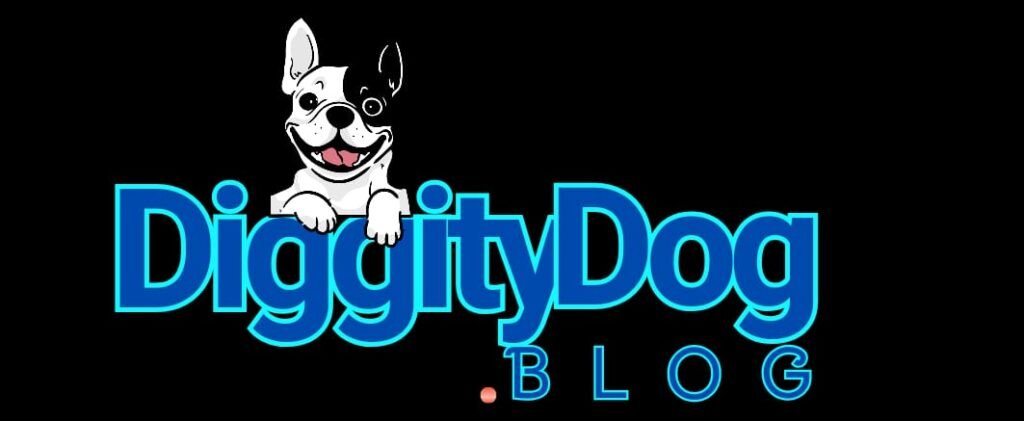

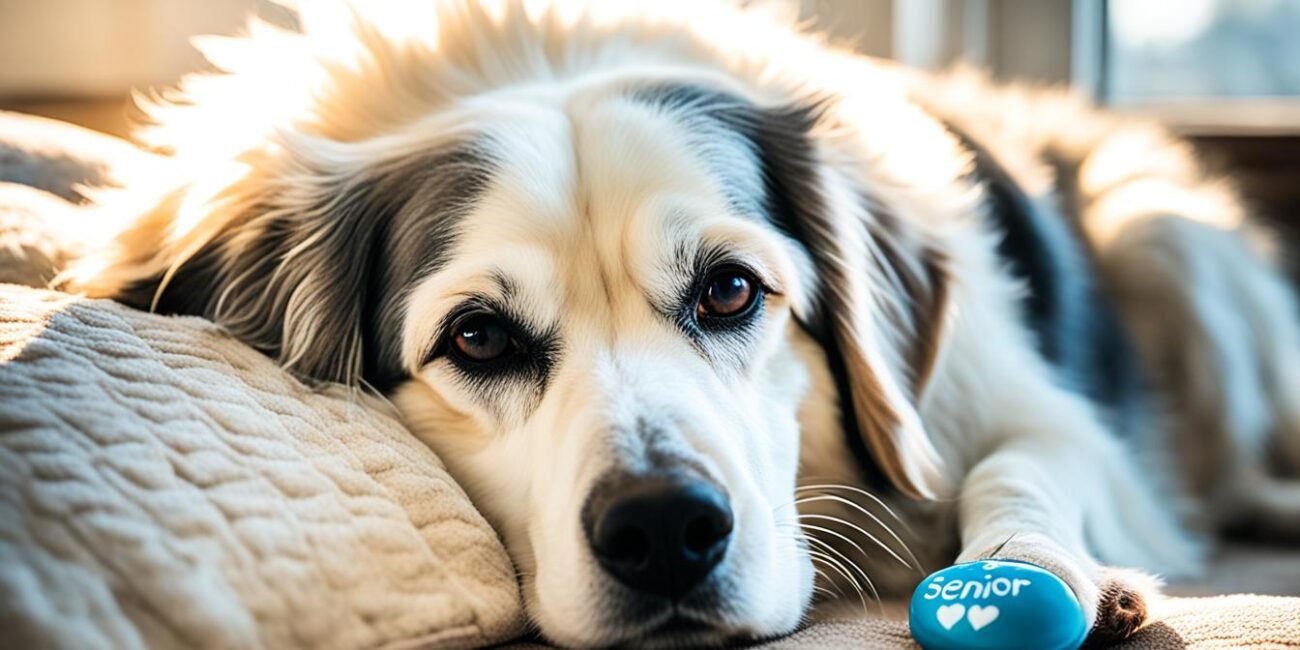


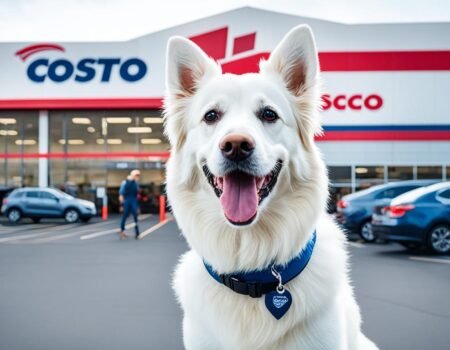
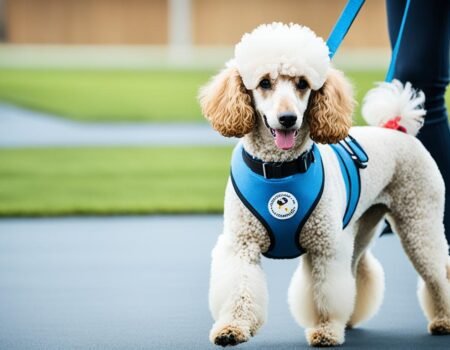
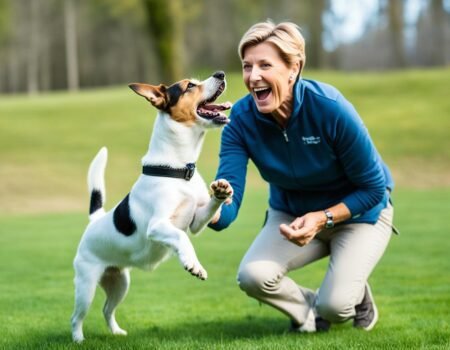
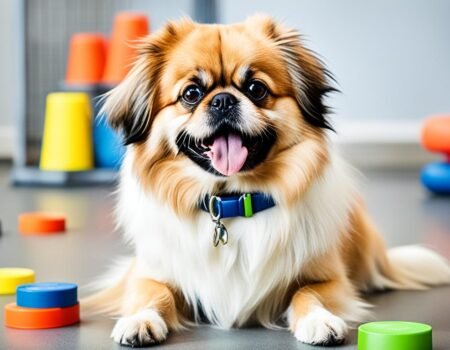
No Comment! Be the first one.